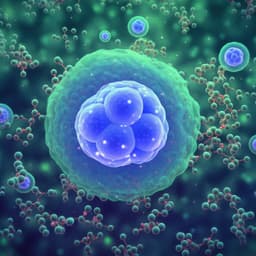Introduction
Microplastic pollution in aquatic environments is a significant concern, with a large proportion of global plastic production unaccounted for in the oceans. A substantial amount is hypothesized to accumulate in river sediments, acting as a temporary sink before potential eventual transport to the ocean. However, the distribution of microplastics within riverbeds is poorly understood, hindering accurate quantification of this pollution. Most previous studies employed large-scale approaches, sampling across tens to hundreds of kilometers, providing limited insight into small-scale variations in MP distribution. This study addresses this gap by investigating MP distribution within the riverbed of the meandering River Lys in Belgium, focusing on variations across different sedimentary environments within the riverbed and their correlation with sediment characteristics. The research questions address how MP concentration varies within a riverbed across different sedimentary environments, and whether organic matter and mud content predict MP concentrations. Understanding this small-scale distribution is critical for developing better sampling strategies for larger-scale studies and improving the accuracy of MP quantification in rivers and other aquatic systems. This knowledge is also essential for estimating the total amount of microplastics sequestered in riverbeds and, consequently, for determining the extent to which rivers store plastic that is not detected in the oceans.
Literature Review
Existing literature on microplastic pollution in river sediments highlights the widespread presence of MPs in freshwater environments. Studies have identified various factors influencing MP abundance, including population density, urbanization, water flow velocity, and wastewater management practices. However, the relationships between these factors and MP abundance are inconsistent. Some studies reported positive correlations between MP source regions (highly populated areas) and sediment MP abundance, while many others found no significant correlations. This inconsistency has been attributed to hydrodynamic effects, with higher MP abundances predicted and observed in areas with lower flow velocities. Most studies employed large-scale sampling methods, focusing either on thalweg or riverbank sediments, limiting the understanding of small-scale spatial variability. While some integrated samples across the riverbed or compared riverbed with floodplain sediments, none have thoroughly investigated MP depositional patterns at the scale of the riverbed. This lack of fine-scale analysis hinders the development of robust sampling strategies and accurate quantification of MP accumulation in rivers.
Methodology
This study used high-resolution bathymetry and side-scan sonar imaging to map the River Lys riverbed and select sampling locations. Surface sediments (0-3 cm) were collected from three transects: two in the apex of bends ('North Bend' and 'South Bend') and one in a straight section ('East Straight'). Each transect included 5-7 sediment samples targeting main sedimentary environments. Microplastics were extracted from the sediments using a standardized protocol including KOH digestion and density separation, followed by identification and quantification using micro-FTIR spectroscopy. Water samples were also collected at various depths within the transects to analyze MP concentrations in the water column. Sedimentological parameters (grain size, organic-matter content, carbonate content) were analyzed to examine their relationship with MP distribution. Data analysis included statistical correlations between MP concentrations and sedimentological parameters. MP concentrations were normalized to a 1-5000 µm size range to allow comparison with data from other studies. A normalization procedure was employed to account for variations in sediment characteristics when comparing contamination levels.
Key Findings
Microplastics were detected at all 18 sediment sampling sites, with concentrations varying significantly between sites and ranging from 1.50 ± 2.12 × 10² MPs kg⁻¹ DW to 1.70 ± 0.84 × 10³ MPs kg⁻¹ DW. After correcting for the analyzed MP particle size range, concentrations were found to align with the upper half of global frequency distributions. Polystyrene (PS) was the most abundant polymer type (86%), followed by polyethylene terephthalate (PET; 7%) and polypropylene (PP; 6%). Water column samples also contained MPs, with concentrations ranging from 0.13 ± 0.19 to 25.75 ± 44.31 MPs L⁻¹. The most abundant polymer types in the water column differed significantly from those in the sediments. Transect-level analysis revealed that despite having the highest average flow velocities, the straight section (ES) had the highest average MP concentration, suggesting preferential deposition in straight river sections. Within bends, MP concentrations were lowest in outer bends due to higher flow velocities and erosion. A strong positive correlation was found between MP concentration and both organic matter and mud content, excluding outer bend samples where erosion exposed older, MP-free floodplain sediments. The correlation between MP abundance and sediment characteristics (mud and organic matter content) indicated that these parameters can be used as predictors of MP concentration in net depositional environments, aiding in future estimations of MP sequestration. The normalization procedure using mud content to obtain a normalized contamination level (NCL) suggested a consistent relationship between mud content and microplastic concentration across diverse aquatic environments.
Discussion
The findings demonstrate a significant small-scale variability in MP distribution within the River Lys riverbed, influenced by river hydrodynamics and sediment characteristics. Higher MP concentrations in areas with lower flow velocities (riverbanks) support previous observations of hydrodynamic effects on MP deposition. The strong correlation between MP abundance and organic matter/mud content highlights the importance of considering sediment properties in MP quantification studies. The exclusion of outer bend samples from the correlation analysis indicates that erosion processes in these environments can mask the relationship between MPs and sediment characteristics. The proposed normalization procedure using mud content provides a valuable tool for comparing MP contamination levels across different aquatic environments, compensating for variations in sediment properties. Further research is needed to validate and refine this normalization factor across a wider range of river types and environmental conditions. The observed relationships between MPs, sediment properties, and hydrodynamic conditions offer valuable insights for developing more efficient and accurate sampling strategies and for estimating total MP sequestration in river sediments.
Conclusion
This study provides novel insights into the small-scale distribution of microplastics in a meandering riverbed. The strong correlation between microplastic concentration and sediment characteristics (mud and organic matter content) in net depositional environments provides a robust approach for predicting and normalizing microplastic abundance. Future research should focus on validating this methodology across diverse river systems and investigating the spatiotemporal dynamics of MP distribution to improve quantification of MP sequestration in rivers and other aquatic environments. Developing a better understanding of the factors driving MP distribution will help refine monitoring strategies and enable more effective mitigation efforts.
Limitations
This study focused on a single river section during a specific time period, limiting the generalizability of the findings to other rivers or seasons. The 0-3 cm sediment depth sampled may not capture the full extent of MP accumulation in deeper layers. Further research is needed to validate the proposed normalization method and its applicability to other river types and environmental conditions. The study's focus on surface sediments may not fully represent the total MP load within the riverbed.
Related Publications
Explore these studies to deepen your understanding of the subject.






